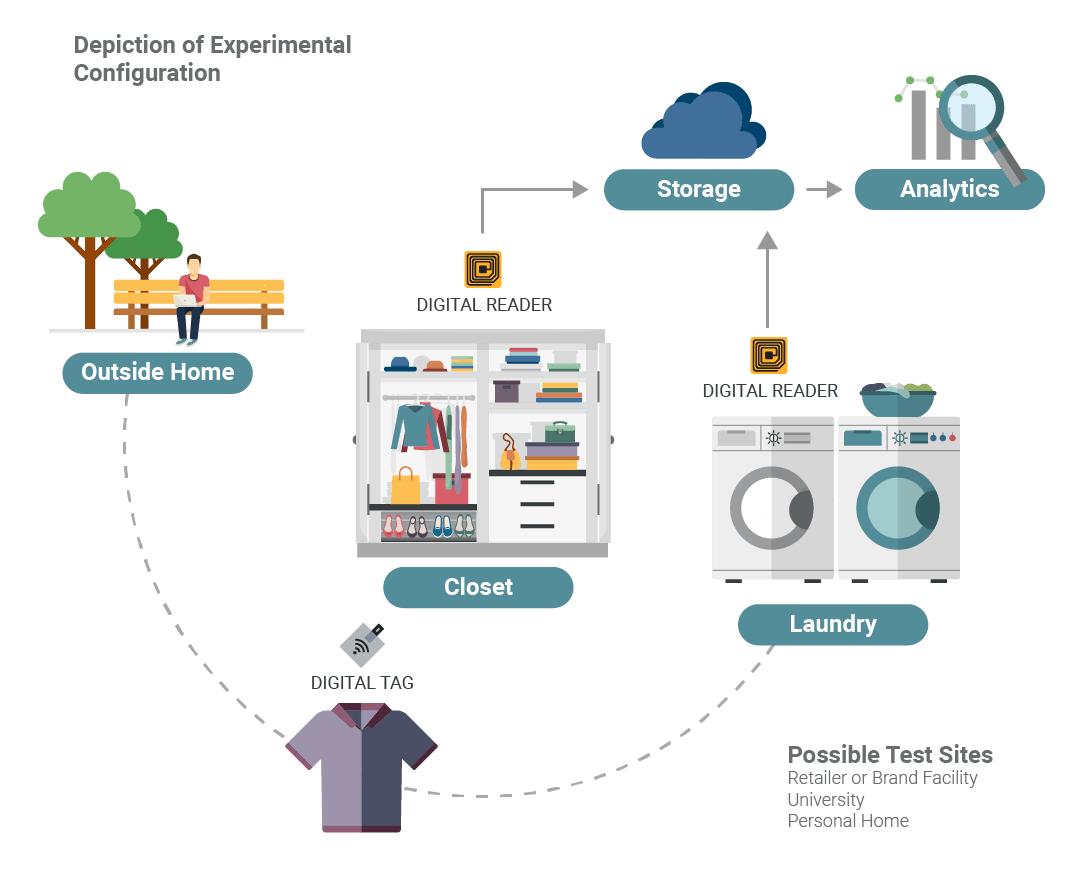WearEver
Clothing provides its greatest benefit to society when it lasts longer, is used more frequently, and is reused or recycled. The goal of The Sustainability Consortium’s Project WearEver is to:
Use garment embedded information technology to measure clothing use
Create a market-based system that incentivizes demand for clothes that have better emotional and physical utility and durability.
PILOT STUDIES
Project WearEver is implementing pilot studies in 2019 to demonstrate the use of technology to track clothing use and laundering. Additionally, it will prototype measurement standards, privacy policies, and analytics that create value and reduce risk for brands, retailers, and consumers. Pilot studies will take place in both home and office settings. Possible technologies to be demonstrated include RFID, NFC, and motion or thermal sensors.
OBJECTIVES
The main objective is to demonstrate that tracking technology can be used to identify when an item of clothing is being worn (used), being laundered, or being stored (not used). This includes:
These pilot studies will explore the following objectives during this proof-of-concept phase:

Learn more about the pilot study requirements.
GET INVOLVED
Project WearEver is seeking partners to provide financial, technological, and human resources.
Project funding provided by:

